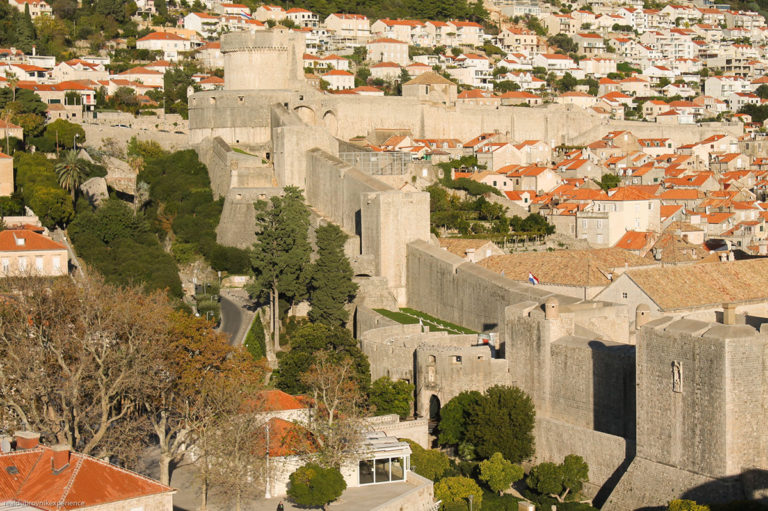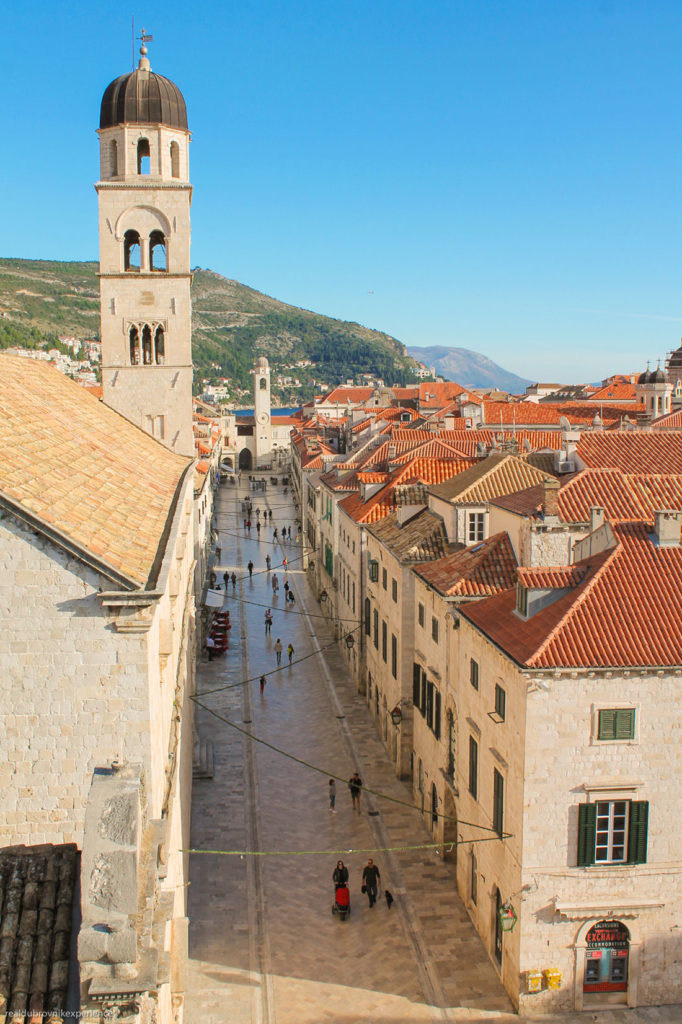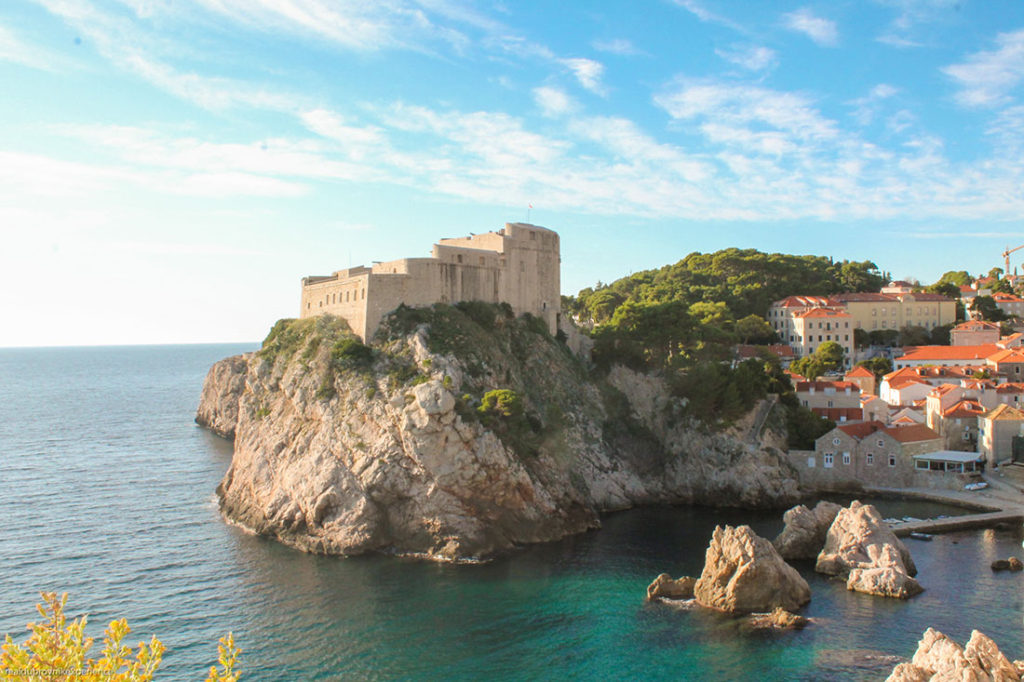Dubrovnik's Top Attraction: Spectacular City Walls
Coming to the old town of Dubrovnik you simply can’t miss or remain indifferent to its most famous landmark—the spectacular city walls.
Protecting and embracing the city with their mighty mantle, the city walls of Dubrovnik stand as a proud witness to the city’s past and present. Preserved in their original appearance and representing an outstanding achievement in military fortification architecture, they are considered one of the major reasons why Dubrovnik was inscribed on UNESCO’s World Heritage Sites list in 1979.
Length: 1940 m (1.3 mi) Height: max. 25 m (82 ft) Width: 1.5–6 m ( 4–19 ft) Construction: 12/13th century–17th century
City Walls History
From its early beginnings, Dubrovnik (then known as RAGUSA) was protected with walls, and as the city grew, the walls grew with it. As the old city reached its current size at the turn of the 12th century, the construction of the present city walls began. They will be built, fortified and perfected with the greatest care for over 500 years, as the last modifications were made in the 17th century. So it comes as no surprise that they survived almost intact the Great earthquake of 1667.
The construction of the walls went through a couple of significant stages. The first phase was the building of a high wall, which will encompass the whole city within its perimeter. Later, in the the 14th century, the city walls were fortified with fifteen square towers, (today twelve are left in their original shape).

Western part the city walls with the view of the Pile gate and the Minčeta Tower
The late 14th century sees gunpowder artillery and small arms appear on the battlefield leading to changes in military architecture. That and the threat of Turks’ attacks in the 15th century prompted the city to strengthen its walls and forts. In addition to that, a new lower curtain wall with round bastions and a moat were built in front of the existing walls.
It was during the 15th and 16th century that the most famous fortifications got their present shape: the tower of Minčeta, situated at the highest point of the city walls complex and considered as one of the most impressive ones, the fortress of Bokar, on its south-western part, and the St. John’s fortress, which guards the entrance to the old port.
Walking the city walls
Walking the city walls is one of the best ways to experience Dubrovnik, getting to enjoy the city from the bird’s eye. The walk offers breathtaking views, and wherever you look, an opportunity opens for amazing snapshots, whether of church domes and bell towers poking in between a sea of terracotta roof tiles on the inside of the walls or of the blue Adriatic sea, the new town and the slopes of Srdj hill on the outside of the walls.
There are three entrances to the city walls: a first one, the busiest, by the western Pile gate’s interior entrance to the city, a second passing the eastern Ploče gate (close to the Dominican Monastery), and a third by the St. John’s fortress (in the harbor area).

View of the entrance to the city walls of Dubrovnik by the western Pile gate

The main street of the old town of Dubrovnik – Stradun, viewed from the city walls
It takes around 1.5 to 2 hours to walk the whole perimeter of the city walls, so you can freely skip your gym workout for the day. If the 1.5 to 2 hour walk seems too long or too strenuous for you, you can always opt for walking just one part of the walls, as every entrance represents an exit as well. In that case please note that there is an obligatory direction—anti-clockwise (good to know when choosing the entrance that best suits your interests). Whether you choose to walk the whole perimeter or just one part of the walls, the ticket’s price stays the same.
Good To Know:
Price: adults 35 euros, children 15 euros.
Apart from the city walls, the same ticket includes admission to another attraction separated from the city walls – the Lovrjenac fortress. (Plan to visit the fortress of Lovrjenac within 72 hours after validating your ticket at the walls).
If you buy tickets on-site, only Euros and credit cards are excepted. If you are planning to visit some other historical sites, namely museums, you may consider buying the Dubrovnik card/pass.

View of the Lovrjenac fortress from the southern part of the city walls
Opening hours: vary considerably throughout the year. It’s best to check on-site or upon your arrival to Dubrovnik at Dubrovnik city walls’ official site, which displays actual period opening hours. On the same web site, you can buy tickets for the walls on line.
Once you get on top of the walls, you’ll be out in the sun for most of the time, so make sure you bring your hat and sun cream and stay hydrated. If you have your water bottle with you, you can fill it at one of the old town’s drinking fountains before you start your climb up, saving your money and the environment at the same time.
If not, don’t worry, once on the walls, there will be some opportunities to buy water or get a refreshment (although mostly in the southern part of the walls), where you’ll find a public toilet too.
Did you know:
News of the fall of Constantinople in 1435 into Turkish hands prompted the city of Dubrovnik to strengthen the existing walls. For that purpose, large quantities of lime (stone) needed to be transported to the old town, so the government brought a decree that anyone coming to the city had to bring a stone, large or small, according to its stature, for use on the walls.
